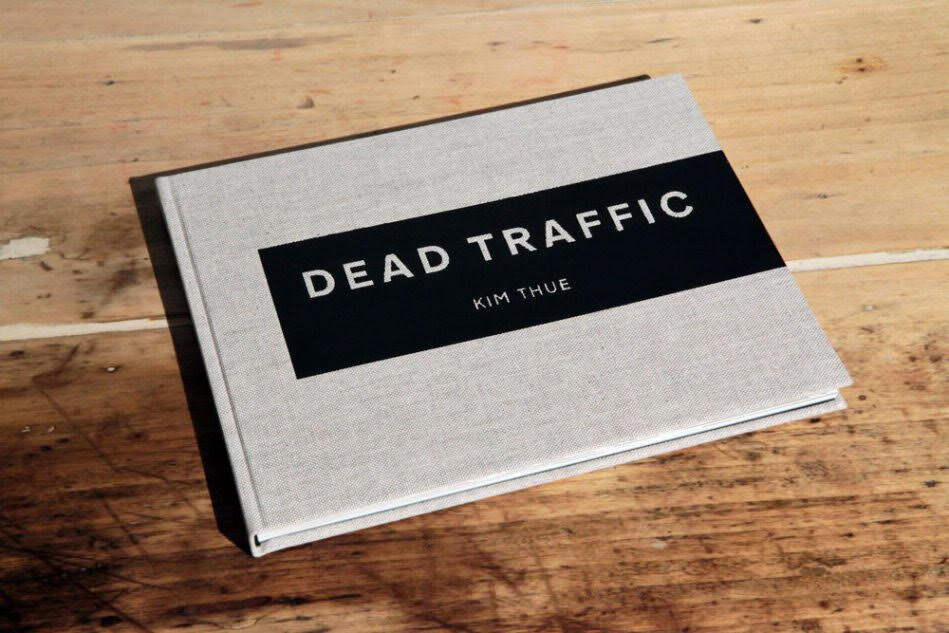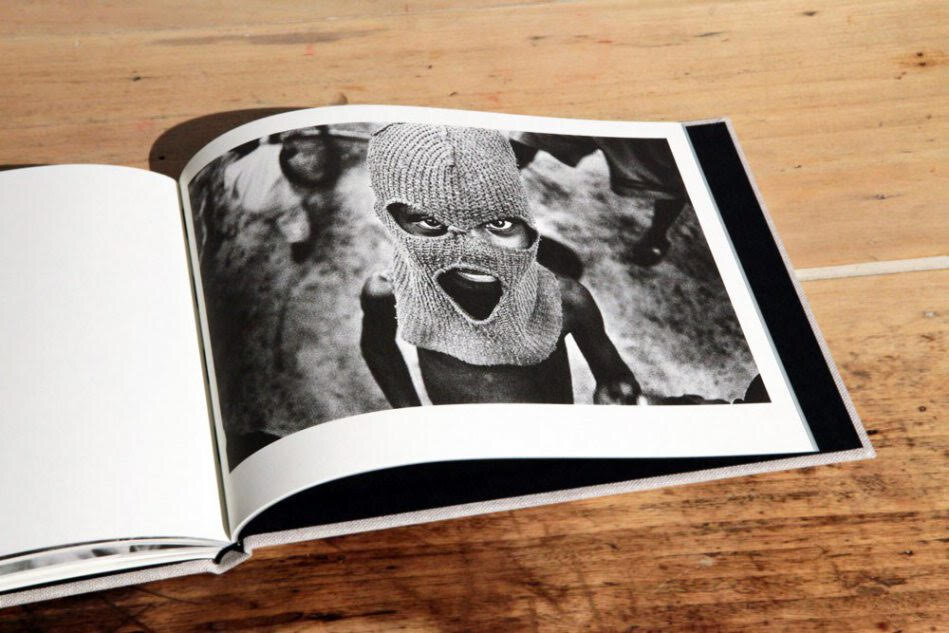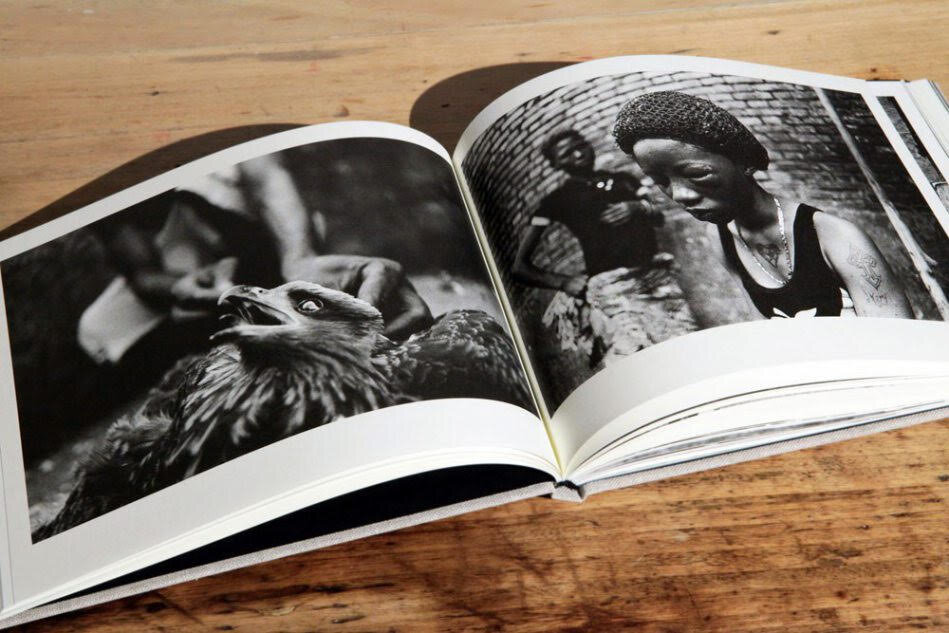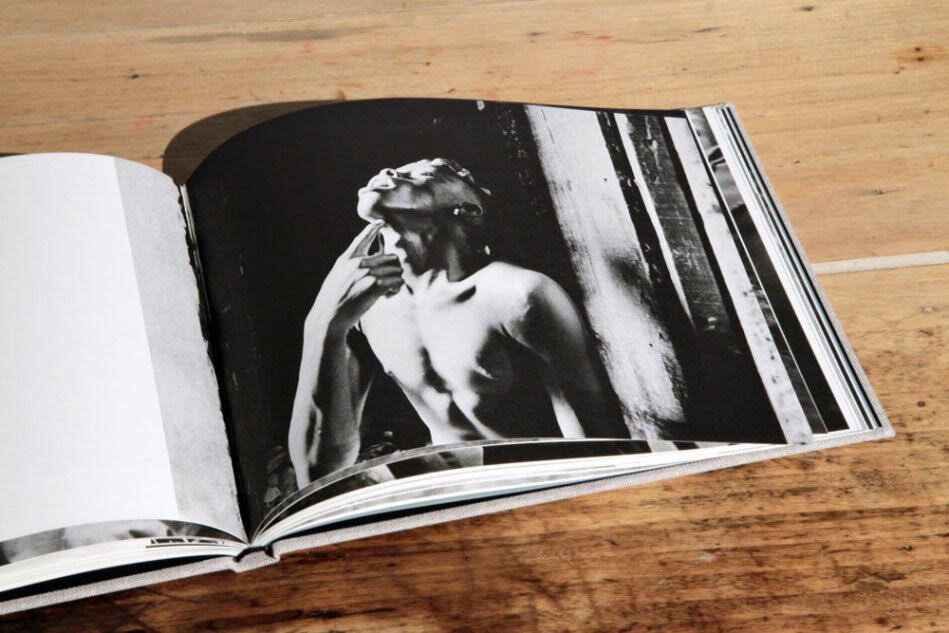Dienacht: An Interview with founder Calin Kruse
Dienacht: An Interview with founder Calin Kruse
Interview by Julian Lucas
Consistently beautiful can easily describe the array of photobooks Calin Kruse has published under the name Dienacht. After viewing the gorgeous collection books I felt compelled to interview Calin about the process of a publisher. I can say I have a strong appreciation of the approach Kalin takes as every single book is beautifully and thoughtfully created.
What is the origin of the word dienacht? When did you begin as a publisher? Did dienacht start off publishing magazine or were photo books first?
Die Nacht means „the night“ in German, I just write it in one word. And I call it „the night“ because the night is a kind of parallel universe to me, it’s a source of inspiration. By night, you see and perceive things differently. In a city, you would see wild animals on the streets - foxes, raccoons, boars. So I’m interested in hidden things. Things that are there, but you usually don’t see them.
I started with the photo magazine in 2007, while I was still studying Graphic-Design, and from here things developed. I didn’t really plan anything that happen, but because I was doing the magazine, I was invited to hold talks and lectures about the work on the magazine; then I wanted to leave the format of the magazine, so I organized and curated exhibitions with artists from the magazine.
I (self)published small and handmade zines for a while, but publishing other people’s books happened because (in a nutshell) I had one submission for the magazine that was so extensive and so many photos were high quality, that would be impossible to cut it down to a magazine feature. So I decided to make a book out of it, it was „Dead Traffic“ by Kim Thue, which was published in 2012.
You are also a photographer can you tell us how you got started in photography? What has been your focal point within the medium?
I used to paint when I was in school, I also had some exhibitions and sold some of the works, but one year or two after I began my design studies, there was no time for painting anymore. I needed time and space for painting, I couldn’t say „I have now a two hours slot, let’s paint“. It was also around the time when I published the first issue of „dienacht Magazine“. I was interested in photography for a while, and I also applied for the Graphic-Design studies with some photographs, so that was the time I got more interested in photographing more. Besides, I had a student job in the photo studio and darkroom at the university, so I could use them (and I did) at any day or night time. So I started to take photos instead of painting.
But still, I don’t know much about technique, I photograph very intuitively on film, without thinking much or questioning it. So I’m interested in basics around me – the animals, nature, (nude) portraits, and the common place of these 3 elements.
Publishing can be a long process, from working with artists to selecting images from a large body of work. dienacht has a wide range of artists who have been published. What has your experience been collaborating with artists? How do you find artists to publish? Is there a submission process or do you seek out the individual?
There is not only one way. People can apply with a project, but it’s also happened that I’ve asked someone if they want to publish a book together. It also happened a couple of times that photographers applied with a series for the magazine, but I saw the project more as a book. I think a book and a magazine are two different mediums, one is not better than the other, but you need to find the „language“ for every single project, whether it’s a book, a magazine, an exhibition, an installation, etc.
I also publish many small projects, in a small print run, which brings zero income, but I like them so much that I just want to make them.
The way of collaboration is also very different from artist to artist. In general, both the artist and I have to be happy with the book. Some artists need the total control of every step in the book, need to discuss and understand why I took certain decisions, and explaining is a big part of making a book. Other artists say „I totally trust you, here are my works, do whatever you want with them“.
What do you look for when selecting images from a body of work?
I am still interested in everything that’s hidden in all possible ways, showing what’s there but not visible or on the surface. Or a certain view on things, which is unique or I haven’t seen before. And in general, the magazine and the publishing is a very personal thing, I show works that I like and to make accessible to others, no matter how well known or not well known the photographers are.
How do you know you have accomplished a goal as a publisher? What are your accomplishments? Do you have a team of people working collectively?
Since I do what I like and want, the only goal would be to be able to continue doing that and develop, so every „accomplishment“ is a bonus. The magazine and the books won some awards and prizes and got international recognition, have been exhibited, and so on. But I think the biggest accomplishment is to still be able to do this. And the project develops, it started with the magazine, went to curating exhibitions, to special editions of the magazine, to zines and books, to offering mentoring and making photobook workshops and masterclasses all over the world, with printed and bound dummies at the end of every workshop. The next big project is curating a photo book exhibition for the Museum of Applied Arts in Leipzig.
I started dienacht as a one-man-project, so it’s just me and I was doing everything myself, from design to distribution and basically everything else. Two year ago Yana joined me in life and work, but there is no bigger team than that.
What are your feelings about zines vs the photo book?
I like both, I publish both, and I wouldn’t say one is better than the other – again, it’s about finding the right language for a project. Actually, my diploma work was dealing with the evolution of zines, and knowing their history, you realize that they developed much more than photo books did. Unless you have a photocopied or roughly made zine, it’s difficult to tell the difference between photo books and zines. I would say the difference is in the binding, but this can also be proved wrong, depending on the project. I own great photo books and also great zines.
As artists, we are all drawn to something personally intriguing which sometimes can become something that is tending. Do you see trends within publishing? Do you see trends based on region meaning trends in Europe and trends in the US?
I think the biggest trend is the printing quality, which is increasing. Since I go with my books to photo book fairs quite a lot, I notice that printers and book manufacturers discovered our „industry“ for their companies, their representatives walk from table to table and talk about their services.
Since Europe is not a country, I’d say there are trends within European countries. In Belarus there’s a different mentality and topics than in Portugal, I think there’s a slight difference in the topics or approach. But I don’t know so much about the U.S. publishers, because not many of them come to fairs in Europe. In the end, photography is one language, I don’t think one region catches up with a trend later than other. Only the Japanese publishing culture is at a very different level.
What has been your favorite book that you have published?
It’s always the last book I published :) Which is now „Myself, friends, lovers and others“ by Latvian Photographer Arnis Balcus.
Are you currently working on any projects? Have you published any new book?
There are always a couple of ongoing projects at the same time. I’m also working with my own photography, I really enjoy finding a form of a photo book (or a zine) that suit them. And I’m working on the curation of the exhibition about photo books that I mentioned before, which will also be hopefully accompanied by a publication.
› New book: Myself, friends, lovers and others by Arnis Balcus.
› Mentoring and Reviews of Portfolios / Series / Book Projects / Websites: info here





